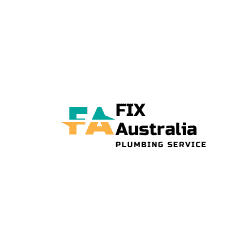Ingrown toenails can be a source of great discomfort and pain. Understanding the right methods for treatment and prevention is key to maintaining healthy feet.
Today we will provide comprehensive insights into managing ingrown toenails and integrating effective home remedies, care tips, and professional treatments.
How Fix Ingrown Toenails detail Guide
is a big problem for men and women when feel pain in ingrown toenails and fixing is also painful because you feel scared. so here are some causes and risks to understand.
Causes and Symptoms of Ingrown Toenails
- Improper Nail Trimming: Cutting nails too short or in a curved manner can cause ingrown toenails.
- Tight Footwear: Shoes that don’t fit properly can press the nail into the toe skin.
- Genetic Factors: Some people are genetically predisposed to ingrown toenails.
Understanding the Risks and Complications
- Infection: Ignoring ingrown toenails can lead to bacterial infections.
- Chronic Pain: Continual neglect may result in persistent toe pain.
Home Treatment Techniques for Fixing Ingrown Toenails
There is no need to worry about how to fix ingrown toenails at home. follow the processes below to fix it quickly.
Soothing with a Warm Water Soak
- Alleviating Pain and Swelling: Warm water helps to soften the skin and reduce discomfort.
- Enhanced with Epsom Salt: Adding Epsom salt can increase the effectiveness of the soak.
The Cotton Bud Technique for Ingrown Toenails
- Realigning Nail Growth: Gently pushing the skin with a cotton bud post-soaking can help correct the nail’s growth direction.
Antiseptic Apple Cider Vinegar Soak
- Preventing Infection: Apple cider vinegar’s antiseptic qualities aid in preventing toenail infections.

Professional Treatment Options for Ingrown Toenail
Here is a quick guide to fix a pain.
Nail Trimming Techniques for Ingrown Toenail Prevention
- Proper Cutting Method: Straight across trimming to prevent ingrown toenails.
- Avoiding Too Short Trims: Keeping nails at a moderate length is crucial.
Matrixectomy: Partial Toenail Removal
- For Severe Cases: Removal of part of the nail may be necessary for extreme conditions.
- Performed by Professionals: A healthcare professional usually conducts this procedure.
Nonsurgical Care for Chronic Toenail Pain
- Specialized Footwear: Shoes designed to alleviate toe pressure can be helpful.
- Protective Toe Pads: These can provide cushioning and protection to the affected area.
Self-Care Strategies for Healthy Feet
If you are healthy here are the self care techniques to fix ingrown toenails.
Essential Foot Care Tips
- Regular Hygiene: Keeping feet clean to prevent ingrown toenails.
- Comfortable Shoes: Wearing shoes that fit well and offer adequate toe room.
Methods for Ingrown Toenail Pain Relief
- Over-the-counter Medications: Pain relievers like paracetamol or ibuprofen can be used for temporary relief.
Tip: when fixing the Nails you should turn on your Batten Fix Lights to avoid any unconvinced.
Conclusion
Dealing with an ingrown toenail requires a combination of proper self-care, home remedies, and professional medical attention when necessary. Early detection and treatment are crucial to prevent complications. By following these guidelines, you can maintain healthy, pain-free feet. if you have any questions please comment below or contact us.
